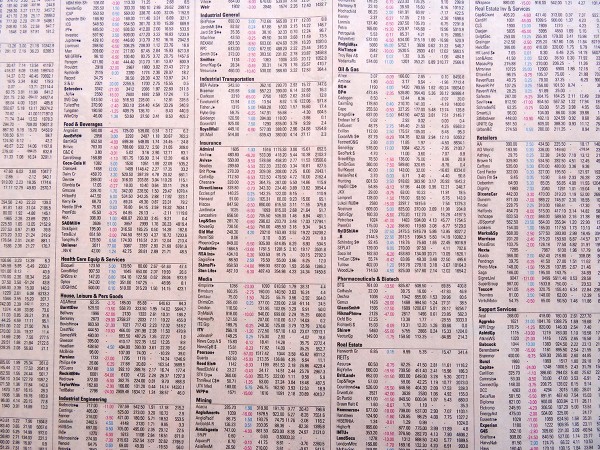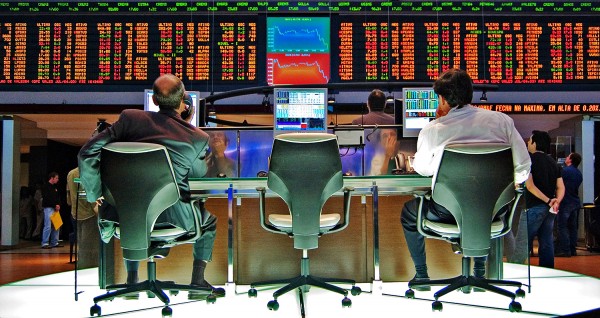When pessimism takes over
 Over 2015 quarter 3, stock markets around the world have seen their biggest falls for four years. As the BBC article states: ‘the numbers for the major markets from July to September make for sobering reading’.
Over 2015 quarter 3, stock markets around the world have seen their biggest falls for four years. As the BBC article states: ‘the numbers for the major markets from July to September make for sobering reading’.
• US Dow Jones: –7.9%
• UK FTSE 100: –7.04%
• Germany Dax: –11.74%
• Japan Nikkei: –14.47%
• Shanghai Composite: –24.69%
So can these falls be fully explained by the underlying economic situation or is there an element of over-correction, driven by pessimism? And, if so, will markets bounce back somewhat? Indeed, from 30 September to 2 October, markets did experience a rally. For example, the FTSE 100 rose from a low of 5877 on 29 September to close at 6130 on 3 October (a rise of 4.3%). But is this what is known as a ‘dead cat bounce’, which will see markets fall back again as pessimism once more takes hold?
As far as the global economic scenario is concerned, things have definitely darkened in the past few months. As Christine Lagarde, Managing Director of the IMF, said in an address in Washington ahead of the release of the IMF’s 6-monthly, World Economic Outlook:
I am concerned about the state of global affairs. The refugee influx into Europe is the latest symptom of sharp political and economic tensions
in North Africa and the Middle East. While this refugee crisis captures media attention in the advanced economies, it is by no means an isolated event. Conflicts are raging in many other parts of the world, too, and there are close to 60 million displaced people worldwide.
Let us also not forget that the year 2015 is on course to be the hottest year on record, with an extremely strong El Niño that has spawned weather-related calamities in the Pacific.
On the economic front, there is also reason to be concerned. The prospect of rising interest rates in the United States and China’s slowdown are contributing to uncertainty and higher market volatility. There has been a sharp deceleration in the growth of global trade. And the rapid drop in commodity prices is posing problems for resource-based economies.
Words such as these are bound to fuel an atmosphere of pessimism. Emerging economies are expected to see slowing economic growth for the fifth year in succession.  And financial stability is still not yet assured despite efforts to repair balance sheets following the financial crash of 2008/9.
And financial stability is still not yet assured despite efforts to repair balance sheets following the financial crash of 2008/9.
But as far as stock markets are concerned, the ECB is in the process of a massive quantitative easing programme, which will boost asset prices, and Japan looks as if it too will embark on a further round of QE. Interest rates remain very low, and, as we discussed in the blog Down down deeper and down, or a new Status Quo?, some central banks now have negative rates of interest. This makes shares relatively attractive for savers, so long as it is believed that they will rise over the medium term.
 Then there is the question of speculation. The falls were partly due to people anticipating that share prices would fall. But has this led to overshooting, with prices set to rise again? Or, will pessimism set in once more as people become even gloomier about the world economy? If only I had a crystal ball!
Then there is the question of speculation. The falls were partly due to people anticipating that share prices would fall. But has this led to overshooting, with prices set to rise again? Or, will pessimism set in once more as people become even gloomier about the world economy? If only I had a crystal ball!
Articles
Markets see their worst quarter in four years BBC News (1/10/15)
Weak Jobs Data Can’t Keep U.S. Stocks Down Wall Street Journal, Corrie Driebusch (2/10/15)
What the 3rd Quarter Tells Us About The Stock Market In October EFT Trends, Gary Gordon (2/10/15)
The bull market ahead: Why shares should make 6.7pc a year until 2025 The Telegraph, Kyle Caldwell (5/9/15)
Is the FTSE 100’s six year run at an end? The bull and bear points The Telegraph, Kyle Caldwell (24/8/15)
Webcasts
 The stock market bull may not be dead yet CNNMoney (29/9/15)
The stock market bull may not be dead yet CNNMoney (29/9/15)
 IMF’s Lagarde: More volatility likely for emerging markets CNBC, Everett Rosenfeld (30/9/15)
IMF’s Lagarde: More volatility likely for emerging markets CNBC, Everett Rosenfeld (30/9/15)
 What’s next for stocks after worst quarter in four year CNBC, Patti Domm (30/9/15)
What’s next for stocks after worst quarter in four year CNBC, Patti Domm (30/9/15)
 Global markets to log worst quarter since 2011 CNBC, Nyshka Chandran (30/9/15)
Global markets to log worst quarter since 2011 CNBC, Nyshka Chandran (30/9/15)
Speech
Managing the Transition to a Healthier Global Economy IMF, Christine Lagarde (30/9/15)
Questions
- Distinguish between stabilising and destabilising speculation. Is it typical over a period of time that you will get both? Explain.
- What is meant by a ‘dead cat bounce’? How would you set about identifying whether a given rally was such a phenomenon?
- Examine the relationship between the state (and anticipated state) of the global economy and share prices.
- What is meant by (a) the dividend yield on a share; (b) the price/earnings ratio of a share? Investigate what has been happening to dividend yields and price/earnings ratios over the past few months. What is the relationship between dividend yields and share prices?
- Distinguish between bull and bear markets.
- What factors are likely to drive share prices (a) higher; (b) lower?
- Is now the time for investors to buy shares?